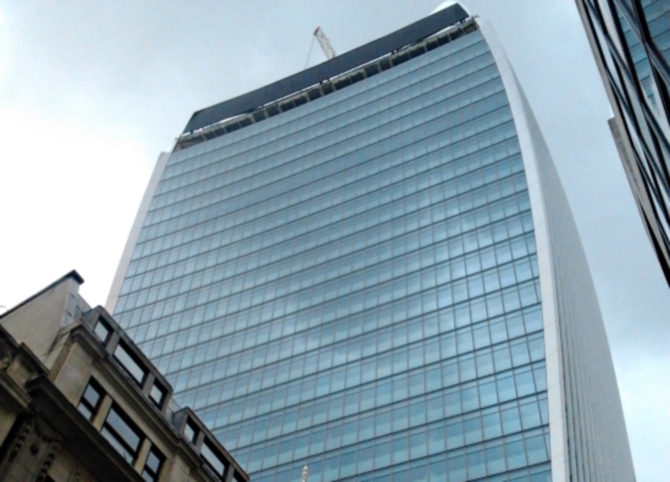The battle over the future of London’s skyline has escalated with warnings that the current rash of high-rise development schemes will cause irreparable harm to the character of the capital.

It was recently reported that there were 236 buildings of 20 storeys or over in the development pipeline. Some of these are commercial developments, but the majority are residential schemes. This figure has since been described as “on the low side” by the Evening Standard which claims the total, with planning permission, is 288.
Opponents of this surge in tower block construction include artists Antony Gormley and Anish Kapoor, writer Alan Bennett and comedian Griff Rhys Jones, who have all signed a letter against the “poorly designed” developments threatening the skyline.
These names have now been joined by those of The Prince of Wales and leading architect Sir David Chipperfield.
Prince Charles spoke out last week against, what he describes as, the “visual pollution” caused by high-rise development as opposed to “traditional English building types.” Consequently he has called for a return to the London mansion block model with a limit of eight storeys.
Chipperfield, on the other hand, is not against tall buildings in principle, but he is concerned by the apparently “uncoordinated” planning process which is allowing such a rapid spread of tower blocks without due consideration.
The architect recently called for greater powers to be given to planning officers in order to give more thought to the appearance of the built environment and to ensure the quality of design.
Echoing his earlier calls, he now says; “Everybody should support this campaign. It’s simply saying that there should be a more co-ordinated planning system in London.
“Backing it is just like voting for good weather. I don’t think anybody, including developers, enjoys the current (planning) conditions.”
Architecture critic, Rowan Moore, who helped to launch the skyline campaign, has called on those in positions of power to “wake up to the risk of irreversible harm that London is facing, and take effective action.”
However, according to property writer and columnist Peter Bill, it may already be too late for opponents to halt the proliferation of high-rise development.
“Butterflies can’t break beanstalks,” he says, (and the campaigners) “simply lack the purchase to scythe a field of London towers.”
A major factor standing in their way is London Mayor Boris Johnson. He has rarely, if ever, blocked a development proposal and last week he overturned two council planning decisions to allow schemes to go ahead in the face of local opposition.
And he has already dismissed Prince Charles’s intervention into the debate, describing his idea to limit the height of buildings as “absolutely crazy.”
A spokesman for the mayor explained that Mr Johnson has to balance “an array of challenges and competing interests” before arriving at a decision. He also recognises that tall, well designed, buildings can help to meet the needs of a rapidly growing city. But Johnson is aware of public concern.
“The Mayor is looking at the idea of a skyline commission,” the spokesman added. “But he’d urge those behind this new group to first study the London Plan and its alterations, and then to engage with the Mayor’s design Advisory Group which already brings together some of the most distinguished names in this field.”

A recent survey suggested that Londoners feel that commercial towers, like the Shard, the Cheesegrater and the Walkie-Talkie, can add to the skyline. At the same time, only 30 per cent of respondents said that they’d be happy living in a tower block.
However, it would be a gross over-simplification to interpret the results as a case of commercial towers = good and residential towers = bad. There have been some ghastly commercial developments, and many have faced opposition on the grounds of their impact on the skyline. It must also be taken into account that, with the population of London forecast to rise to 10 million by 2031, there is a pressing need for residential accommodation, and building tall is an efficient way of providing it.
This predicted population boom, together with the need to provide the office space to ensure London retains its position as a leading international business location, guarantees that the rate of development will continue to divide opinion.
With this in mind, a current exhibition at New London Architecture (NLA) – 26 Shore Street, close to Tottenham Court Road – examines the impact this might have on the capital through a series of models, images and interactive displays. London’s Growing Up continues until June 12 and admission is free.
Previous Post
Agency Plans to sell off Two Merseyside Sites